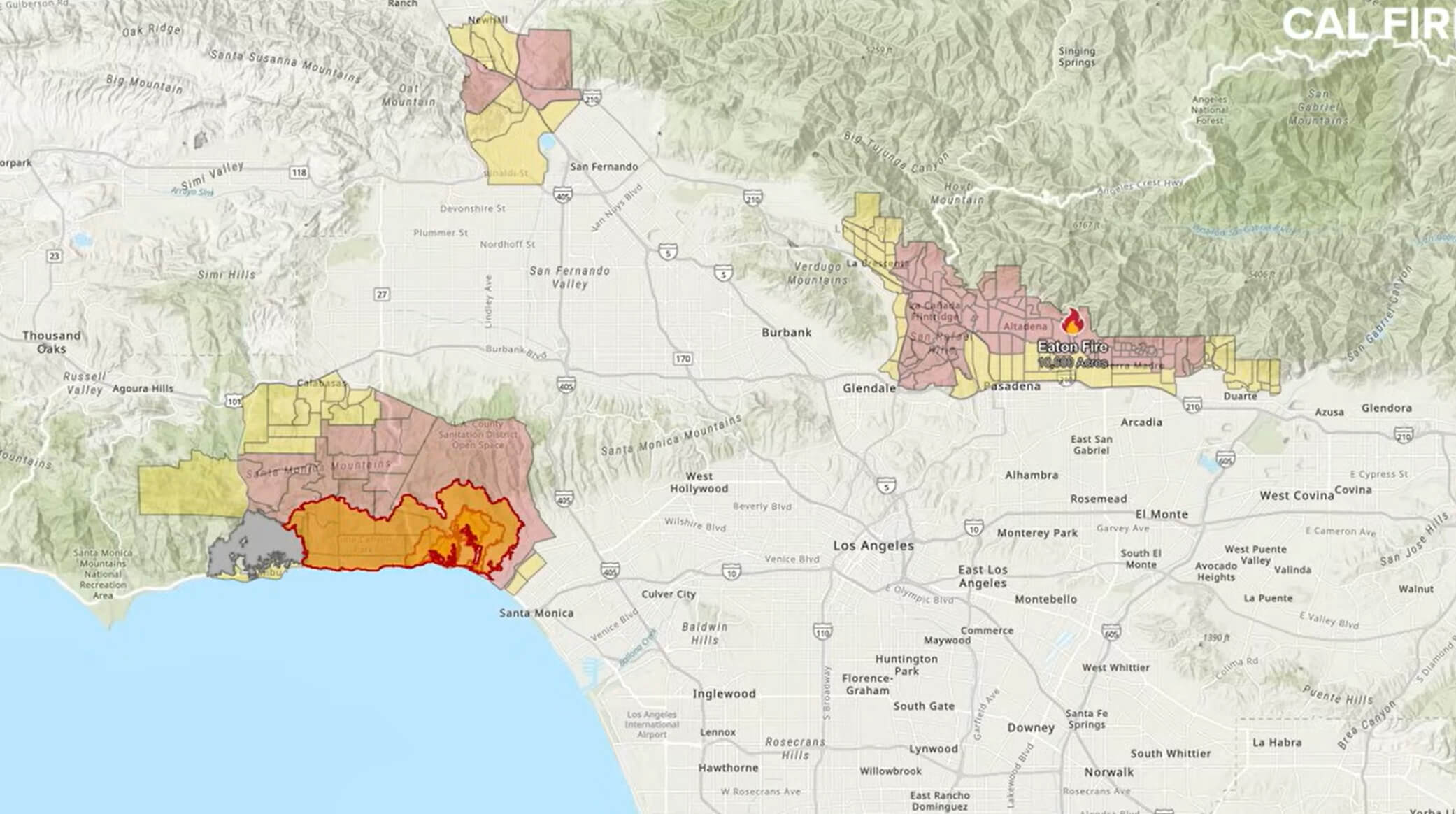Gambling On Calamity: The Case Of The Los Angeles Wildfires

Table of Contents
The High Stakes of Development in Wildfire Zones
The relentless expansion of urban sprawl into high-risk wildfire zones significantly increases vulnerability to catastrophic losses. This expansion represents a considerable gamble with potentially devastating consequences.
Urban Sprawl and Increased Wildfire Risk
The encroachment of residential areas into areas characterized by chaparral and other flammable vegetation is a major contributor to the escalating wildfire risk in Los Angeles. This urban sprawl creates a perfect storm of conditions:
- Increased Ignition Sources: More homes mean more potential sources of ignition, from faulty electrical wiring to carelessly discarded cigarettes.
- Lack of Defensible Space: Many developments fail to incorporate sufficient defensible space – the area around a structure cleared of flammable materials – leaving homes vulnerable to quickly spreading flames.
- Inadequate Building Codes: In some older areas, building codes may not reflect current understanding of wildfire risk, resulting in homes constructed with flammable materials.
This combination of factors dramatically increases the likelihood of intense and rapidly spreading wildfires, putting lives and property at severe risk. Proper wildfire risk assessment and the implementation of stringent building codes using fire-resistant materials are crucial steps in mitigating this danger.
The Economic Gamble of Property in Fire-Prone Areas
Purchasing or owning property in high-risk wildfire zones is a significant financial gamble. While the allure of scenic views and a desirable lifestyle is undeniable, the associated costs can be crippling:
- Rising Insurance Costs: Insurance premiums in high-risk areas are escalating rapidly, making homeownership increasingly unaffordable for many.
- Difficulty Securing Insurance: Some homeowners find it increasingly difficult to secure adequate insurance coverage altogether, leaving them financially exposed in the event of a wildfire.
- Exorbitant Rebuilding Costs: Even with insurance, the costs of rebuilding after a wildfire can far exceed the original value of a property, leading to significant financial hardship.
A thorough financial risk assessment, considering wildfire mitigation strategies and potential rebuilding costs, is crucial before investing in property in fire-prone areas.
Failing Infrastructure and Preparedness
While the natural threat of wildfires is undeniable, inadequate infrastructure and preparedness exacerbate the risks and amplify the devastating impact of these events on Los Angeles.
Inadequate Water Resources and Fire Suppression
Effective wildfire suppression relies heavily on readily available water resources. However, Los Angeles often faces limitations:
- Water Shortages: Droughts and increasing water demand strain water resources, limiting the availability of water for firefighting efforts during major wildfires.
- Inadequate Fire Hydrant Coverage: In some areas, particularly those on the urban fringe, fire hydrant coverage is insufficient, hindering firefighting capabilities.
- Insufficient Fire Crews and Equipment: The scale of major wildfires can overwhelm available firefighting resources, leading to delays in containment and increased damage.
Investing in improved water resources management and bolstering firefighting resources are essential steps towards enhanced preparedness.
Delayed Evacuation and Communication Breakdown
Timely and effective evacuation is crucial for saving lives during large wildfires. Yet, challenges often arise:
- Communication Failures: Inadequate warning systems and communication breakdowns can leave residents unaware of impending danger, resulting in delayed evacuations.
- Inadequate Warning Systems: Existing warning systems might be insufficient to reach all residents, particularly vulnerable populations.
- Traffic Congestion During Evacuations: Mass evacuations can lead to severe traffic congestion, delaying the escape of residents and hindering emergency response efforts.
Improving emergency communication systems, developing robust evacuation plans, and implementing effective traffic management strategies are critical for improving wildfire response.
The Human Cost and Long-Term Consequences
The impact of Los Angeles wildfires extends far beyond property damage; the human cost and long-term consequences are profound and far-reaching.
Loss of Life and Displacement
Wildfires tragically claim lives and displace thousands of residents, leading to immense suffering and long-term trauma:
- Wildfire Fatalities and Injuries: The number of fatalities and injuries from wildfires continues to rise, highlighting the need for improved safety measures.
- Displacement of Residents: Thousands are displaced from their homes, facing homelessness, relocation challenges, and the emotional toll of losing their possessions and communities.
- Long-Term Health Effects of Smoke Inhalation: Smoke inhalation causes significant respiratory problems and other long-term health issues for both residents and firefighters.
Addressing the mental health and social needs of displaced communities is essential for successful community recovery.
Environmental Impact and Ecosystem Recovery
The environmental damage caused by wildfires is devastating and the path to ecological restoration is long and arduous:
- Air Pollution: Wildfires release massive amounts of pollutants into the atmosphere, impacting air quality and contributing to respiratory illnesses.
- Soil Erosion: Burned areas are highly susceptible to soil erosion, leading to further environmental damage.
- Habitat Loss: Wildfires destroy vital habitats, impacting biodiversity and threatening endangered species.
- Long-Term Ecological Effects: The full ecological effects of wildfires can take decades to manifest, requiring long-term monitoring and restoration efforts.
Addressing climate change, which exacerbates wildfire risk, and prioritizing ecological restoration efforts are crucial for protecting Los Angeles's natural environment.
Conclusion
The devastating consequences of Los Angeles wildfires underscore the inherent risks associated with development in high-risk areas, the inadequacies in infrastructure and preparedness, and the devastating human and environmental costs. The high stakes of this "gamble on calamity" demand a comprehensive and proactive approach.
Don't gamble on calamity. Learn about wildfire risks in your Los Angeles community and take proactive steps to ensure your safety and preparedness. Understanding the risks associated with Los Angeles wildfires, implementing wildfire prevention strategies, and advocating for improved Los Angeles fire safety measures are crucial for building a more resilient future. Support initiatives aimed at wildfire preparedness and mitigation to protect our communities and environment.

Featured Posts
-
 Small Businesses Struggle Under The Weight Of Trumps Tariffs
May 12, 2025
Small Businesses Struggle Under The Weight Of Trumps Tariffs
May 12, 2025 -
 Pokhudenie Dzhessiki Simpson Dieta I Trenirovki
May 12, 2025
Pokhudenie Dzhessiki Simpson Dieta I Trenirovki
May 12, 2025 -
 Two Sides Of The Same Coin Exploring Stallone And Caines Diverse Film Collaborations
May 12, 2025
Two Sides Of The Same Coin Exploring Stallone And Caines Diverse Film Collaborations
May 12, 2025 -
 Yankees Giants Series Updated Injury List April 11 13
May 12, 2025
Yankees Giants Series Updated Injury List April 11 13
May 12, 2025 -
 Highlander Reboot Henry Cavill To Star In Amazon Series
May 12, 2025
Highlander Reboot Henry Cavill To Star In Amazon Series
May 12, 2025
Latest Posts
-
 Triumf Za Barnli Pobeda Vo Derbito I Promotsi A Vo Premier Ligata
May 13, 2025
Triumf Za Barnli Pobeda Vo Derbito I Promotsi A Vo Premier Ligata
May 13, 2025 -
 Barnli I Lids Se Vrakjaat Vo Premier Ligata
May 13, 2025
Barnli I Lids Se Vrakjaat Vo Premier Ligata
May 13, 2025 -
 Discover Cp Music Productions A Father And Sons Musical Talent
May 13, 2025
Discover Cp Music Productions A Father And Sons Musical Talent
May 13, 2025 -
 The Musical Legacy Of Cp Music Productions A Father Son Story
May 13, 2025
The Musical Legacy Of Cp Music Productions A Father Son Story
May 13, 2025 -
 Sefilnt Gioynaitent O Mpalntok Giortazei Gymnothora Meta To Ntermpi
May 13, 2025
Sefilnt Gioynaitent O Mpalntok Giortazei Gymnothora Meta To Ntermpi
May 13, 2025
